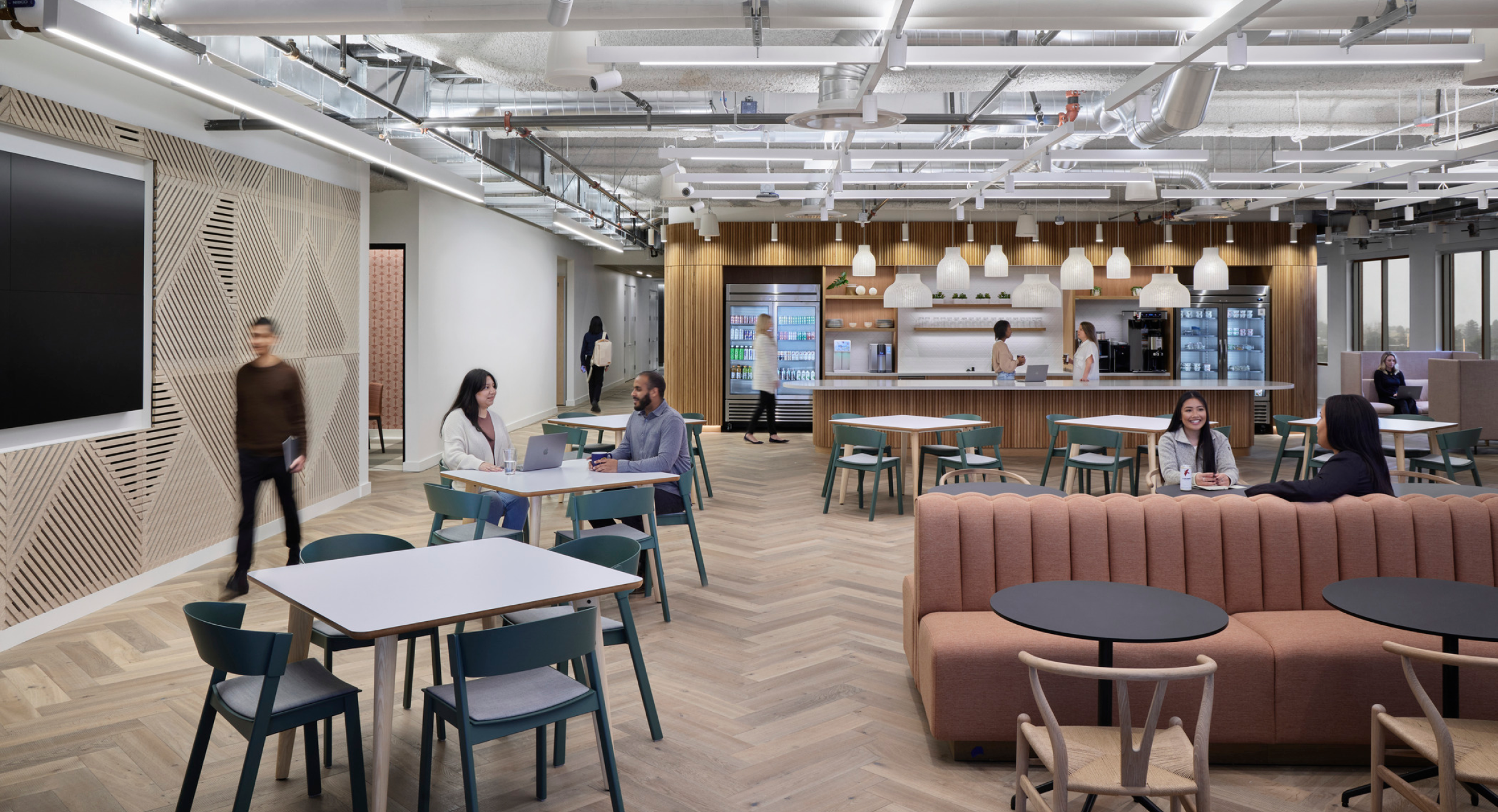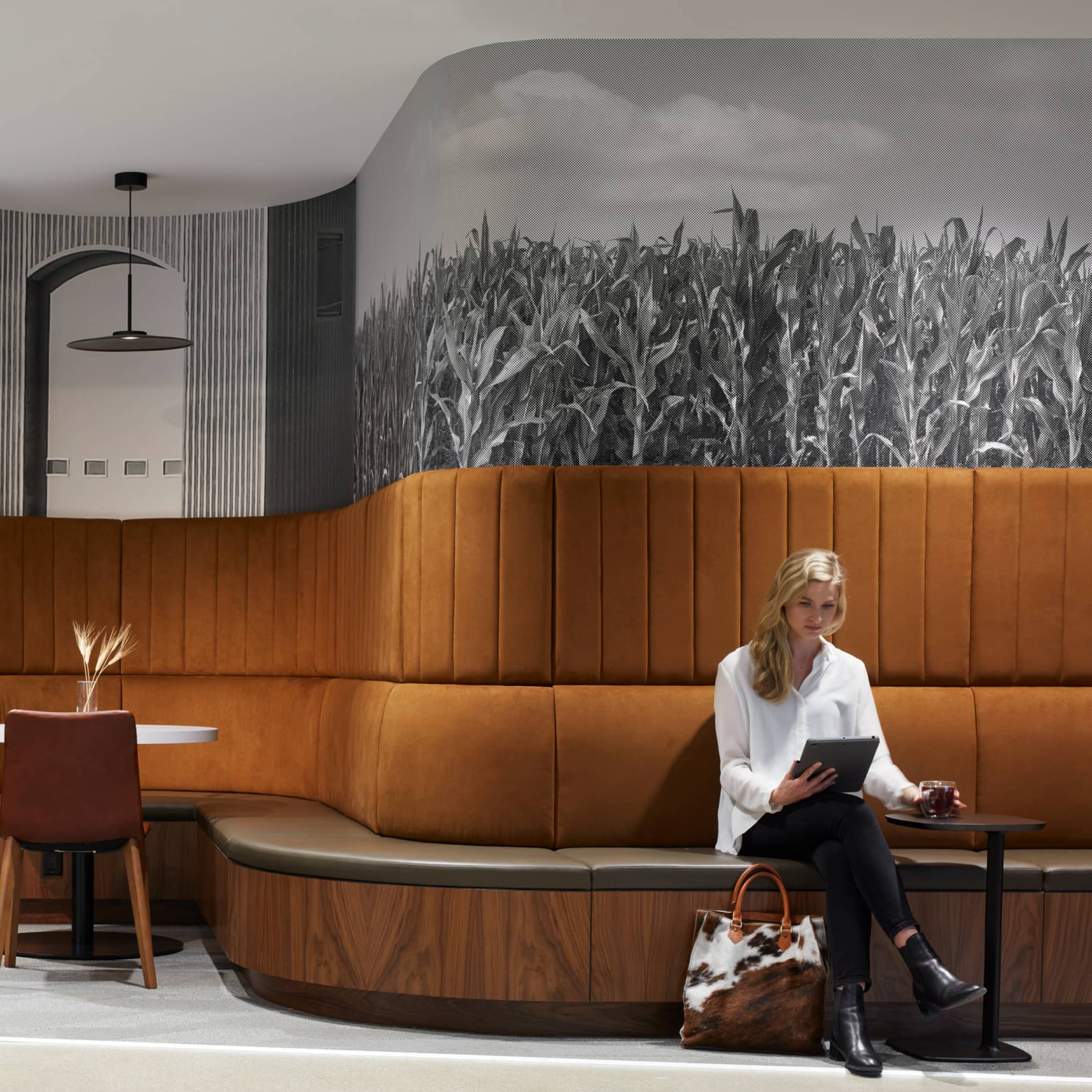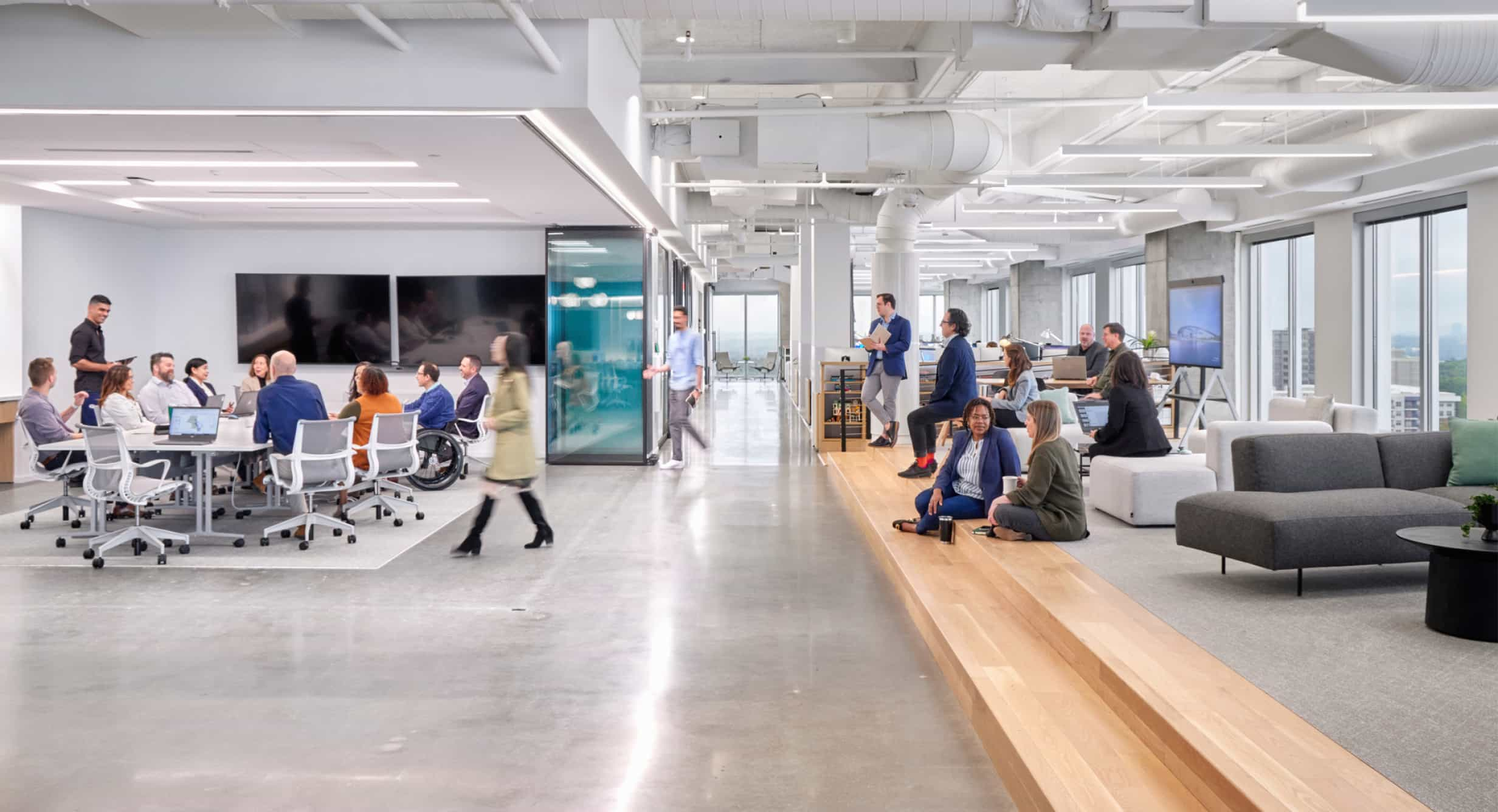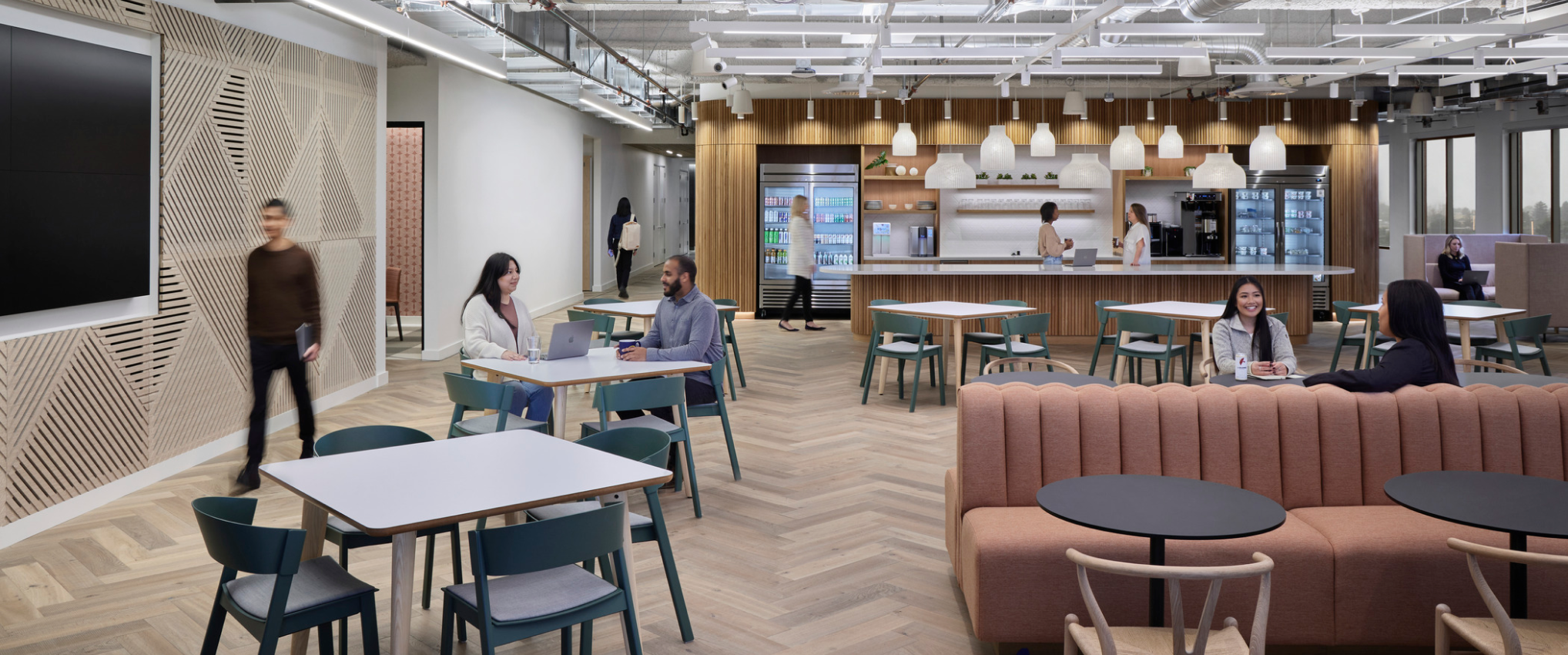
We Need to Break the Workstation
- Casey Lindberg, PhD
- Elizabeth Fallon
- Kate Davis
For decades, workplace headlines have abounded with doomsday depictions of the open office. “Is the open office dying?” “The open-plan office is dead. Do this instead.” “The truth about open offices.” “The immortal awfulness of open plan workplaces.”
Most of these stories catalogue heaps of research pointing to lower productivity, less collaboration, and higher distraction. But these arguments are not addressing the real culprit head-on. The office struggles because the physical building block of the workplace – the workstation – is trying to be all things, all the time, for everyone.
There’s nothing inherently wrong with the combination of a desk, a monitor, and a chair near other desks, monitors, and chairs. The problem arises when that combination is seen as a default, affording all things from creative collaboration to individual focus to virtual connection to rest and recovery all at once.
That’s asking a lot of this one humble design feature.
It’s where we tend to spend most of our time at the office, and it’s where we often do more than one task at the same time. We have a workstation addiction. With that, our workstation is overextended, and it is multi-tasking as much as we are.
Because the open office is the standard for most contemporary office spaces, focusing first on what’s not working with the open office workstation is critical. It’s the linchpin that needs to be pulled before the rest of the workplace can be remade and revitalized for purposeful intent.
Importantly, most doomsday stories about the office confuse the distinction between the physical description of design elements with what those design elements provide for users. So instead of the workstation serving as the default physical building block of the office, what would happen if people were the focus? This design conversation would then change from being based on physical solutions first to one that considers what employees workspaces signal to them – i.e., what each space affords.
Instead of the workstation serving as the default physical building block of the office, what would happen if people were the focus?
A Lack of Evolution
The workstation is the hangover from the industrial era, where employees were interchangeable work points on a factory floor. While this factory floor work was centered on the value of employees’ production of physical goods, this model hasn’t meaningfully evolved much further for most organizations to this day.
The workplace has continued to use industrial era management techniques to define what the office should look and work like, without considering what new types of work might require. This thinking evolved from the iconic SC Johnson Administrative Building where office workers at desks in the open plan could be surveilled by management.
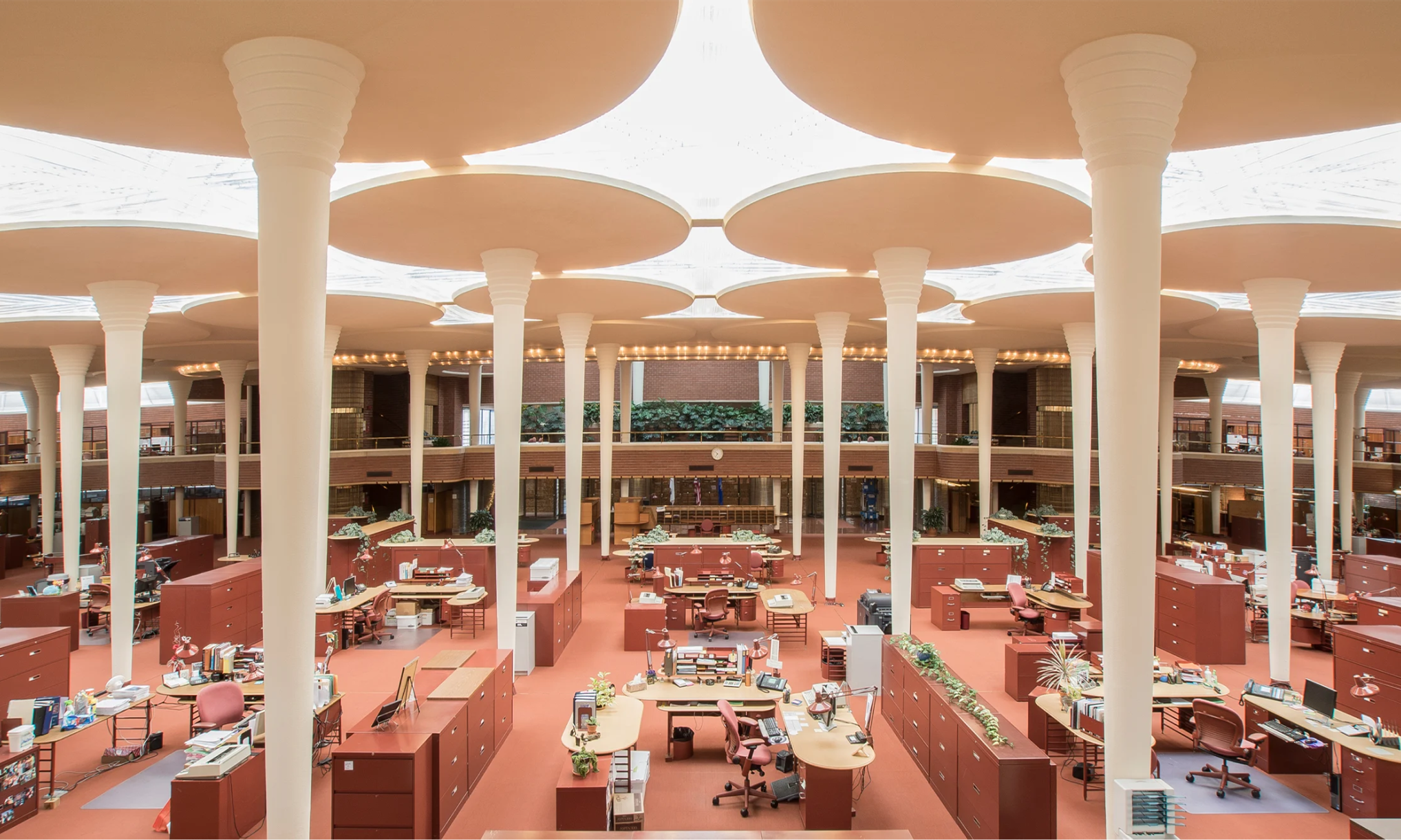
As repetitive tasks and access to information increasingly migrate toward AI, the value of humans is in knowledge work, especially creativity and innovation. So why do we continue to default to a model that was designed for mass production and surveillance? That open office was designed around space and management to contain the work; it never was designed to enhance or even enable freedom of thought.
Complicating the situation is the recent pandemic-related shift in how we approach thinking about the office. The pandemic has led us to rethink how and where we are able to get work done (essentially anywhere, thanks to technology), and for some, the purpose of the office, but it hasn’t led us to collectively rethink the workstation – that is, until now. That’s what we at HKS are doing today.
The Workstation as a Destructive Default
When most employees enter their open-plan office, they seek out their workstation first, whether assigned or unassigned. Why? Because the workstation has become default, and for many, it has always been default. In other words, we have become reliant on our workstation to do all the things we need to do when we’re in the office. It’s our home base and we’ve become dependent on it.
When we focus, ideate, connect socially, co-create, plan, virtually collaborate, rest, and reflect, among so many other things at our workstations, we also do those things around our coworkers. This means that one employee’s behavioral intent is often at odds with another’s nearby. One’s unplanned, casual collision is another’s distraction. One’s deep thinking, focused work is another’s isolation. One’s accountability is another’s surveillance, lack of agency, and lack of trust.
In our collaborative study with the Center for BrainHealth, we found that managing distractions was a key challenge for focused work in an open office environment, and that 6 out 10 employees were dissatisfied with the lack of environmental control. We also found that 71% of our total observed workplace activities at the office were happening at our workstations – including focused work, virtual collaboration, interacting in person, and even cognitive breaks.
Unsurprisingly, this all-embracing perception of what the workstation affords us enables multitasking. 43% of our employees reported frequent multi-tasking. Moreover, multitasking was related to lower ratings of effectiveness and even to increased burnout.
These findings are not revelatory in themselves. An affordance-driven, rather than a physical design-driven, perspective of the workstation helps us understand how we’ve placed too many responsibilities on one solution, and where they are at odds. It also helps us understand how our workstations are multi-tasking right alongside us.
The result is our collective concept of the ‘workstation’ that has become untenable and unfocused.

The Rest of the Office
Just as the workstation can’t be all things all the time and still be effective, the office as a whole will likely not be able to be all things for all people. The office is part of a larger work ecosystem – ideally, a system of intentional and distinct parts that work together across different spaces, often globally and virtually.
Of course, where we work matters because not all environments are suitable for all tasks. If the intent of those different spaces is distinct, clearly communicated, and legible, we can envision more suitable journeys throughout a workday for employees struggling with distraction, multitasking, and agency.
And when we start to consider our work as happening in a larger ecosystem of spaces that afford different things, we might be able to add valuable nuance to the growing number of terms that fall flat due to their inherent overgeneralization (see: hybrid work, flex work, remote work, return to work, return to office, post-pandemic workplace).
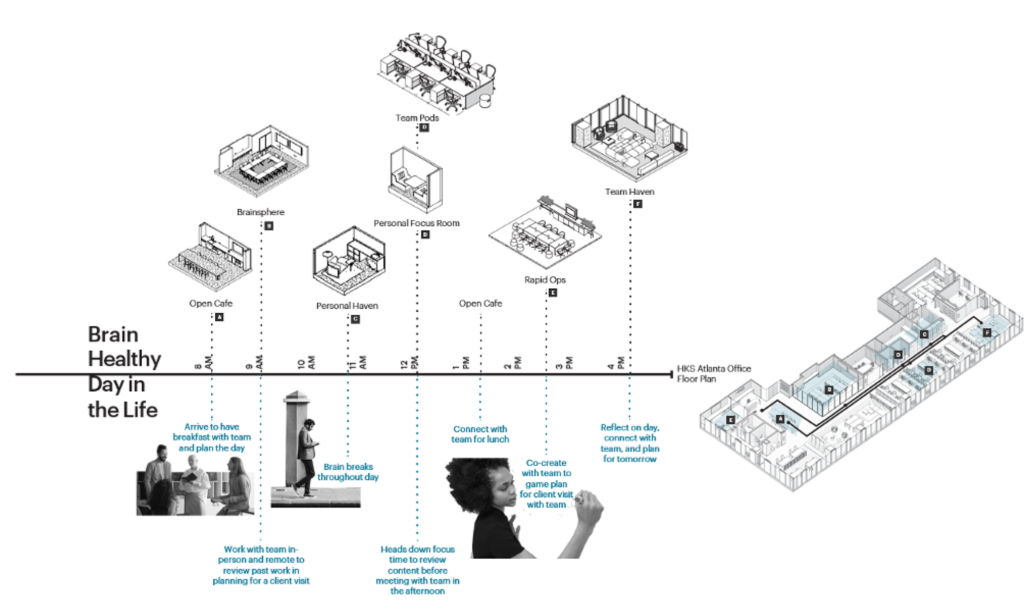
If this discussion were happening decades ago, we might be able to get away with small nudges for what the workstation’s role was in the office. But now, the workstation concept is far too historically ingrained in our work culture, resulting in a bad habit that is challenging to fix.
One of our brain’s superpowers is the ability to learn and form concepts, and to use them to predict how our bodies will interact with our environment. The longer we keep reinforcing and using those concepts, the more powerful they become. When we see something resembling a workstation, that concept will be activated, as will our long history of associated behaviors and habits.
If we want to break the workstation addiction we have to fundamentally change the concept of the workstation – so that instead of a “station” to anchor all work activities, clear affordances are seen in the many work environments that an office provides, empowering workers to align their intent with where and when they can do their best work, depending on role, task, personality and unique sensory needs.
In the next installments, we’ll show how we’re going to break the concept of the workstation and what we can remake in its place. Here’s a hint: Think again about that time when you’re first walking into the office. Let’s say you want to settle in, orient yourself while planning your day, or maybe just crash for a moment with a coworker while checking email. Instead of heading to your default workstation, you don’t, because you do not see one. Instead, you see distinct spaces dedicated to serving your needs in that moment. What’s more, when you head to those spaces, you’ll be around coworkers engaged in activities conducive to, not at odds with, your own.
